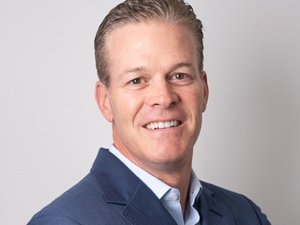The Women's March famously began with a post in a Facebook group asking if anyone would be interested in marching on Washington the day after President Donald Trump's inauguration. There was immediate mass interest, both from people who wanted to march in DC and from others who wanted to host a protest in their city.
Facebook was a great place to start connect with people—but the platform is optimized for connecting friends, not staging large-scale protests. Soon, the Women's March organizers needed an online toolset designed to mobilize grassroots fervor into a powerful movement. So, in early December, they turned to the D.C.-based Action Network.
The Action Network is a nonprofit that develops and maintains a digital toolset for progressive activism. They started in 2012, and its tech has now helped organize some of the most well-known progressive actions, such as Women's March events, the protests at Standing Rock, the KeyStone XL pipeline protests, the 2014 Walmart Black Friday strikes and the People's Climate March in D.C. coming up in April.
Action Network's tools don't require any extensive training—the team didn't want any unnecessary barriers to entry. Their public-facing features, such as collecting emails and donations, are available as easy-to-install widgets. This is key, because the Action Network can function in the background on the websites activists already visit.
Furthermore, if different groups want to collaborate on an event, they can each put the widgets on their own website. Then, Action Network tracks which donations and group members come from each group, which prevents squabbling about which group contributed more or how to divvy up the contact lists and so on.
Action Network's spokesperson Jeffrey Dugas believes their nonprofit status has kept them focused on their mission— "building progressive power"—rather than pleasing shareholders.
"There's a failure in online protesting, which is that the tools are being developed by for-profit companies who need to pay back their investors, and they sell out their values to keep up," Dugas told DC Inno.
Because the Action Network is meant to support progressivism, the team disseminates its tools at a price that doesn't slow groups down. For the smallest groups, that means giving them the Action Network tools for free.
The free version of Action Network's toolset includes most of its digital tools, such as mass emails and fundraising management, and the online widgets and collaborative features. For a small monthly fee, starting at $10 and varying with size of the organization, groups can become "contributing members," which gives them access to more customized tools, such as the ability to upload contact lists from outside newsletter sources like MailChimp.
For its largest "core partner" organization, the Action Network has a premium version of their online system called Networks. In addition to the contributing member features, Networks facilitates the flow of information between hierarchical groups, like national, regional, and local levels.
The levels are designed, so a group can build support from nothing. A shining example for them is the Standing Rock Protests.
The real key is turning that action into organizations and structures that build power over the long haul
Dugas says that he believes that the Dakota Access pipeline was incredibly important to fight against; however, there were just a handful of activists in the Standing Rock Sioux tribe in North Dakota. They didn't have the resources to stage a successful, nationwide protest on their own—they lacked funding, email lists, donors and key outreach tools. So, they started out on the free version of Action Network, where they were able to make connections, started getting interest and eventually hit skyrocket growth. Now, six months later, they've raised around 2 million dollars, and Dugas believes they have the resources and infrastructure to continue indefinitely.
"We only want to supply the technology to organizations or grassroots activists or individuals working towards a fairer, more just world," Dugas said, which he loosely defines as progressivism.
He says it's rare, but if non-progressive groups attempt to use the Action Network's toolset, they could be removed. The Action Network relies on users to flag non-progressive content and reviews it on a case-by-case basis. The team also says it doesn't mediate between conflicting progressive groups.
It may become more common, though, because the Action Network is growing rapidly.
"The last two, three months have seen a level of activity that we haven't seen before," executive director Brian Young told DC Inno.
Of course, it is fair to say that the activity has been in response to the new conservative administration. While it's currently a difficult time for progressive agenda, Young is optimistic about the energy he's seen for progressive activism and is focused on engaging people in the 2018 and 2020 election cycles.
"It's easy to get action going right now, but the real key is turning that action into organizations and structures that build power over the long haul, " he said.
Editor's Note: A previous version of this article misidentified the executive director of the Action Network. His name is Brian Young.




